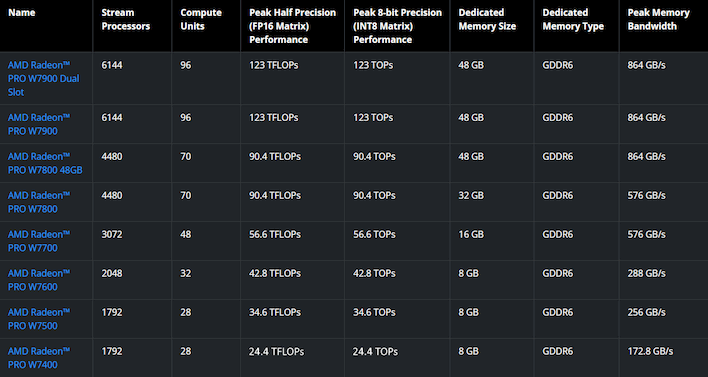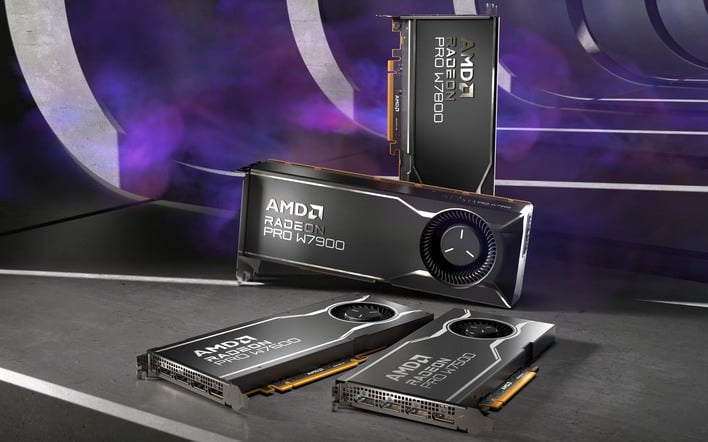AMD Radeon PRO W7400 Breaks Cover For Budget Workstations

From a hardware perspective, the W7400 is nearly a carbon copy of the W7500. It's built on the very same RDNA 3-based GPU, with 28 compute units, and 8GB of GDDR6 memory on a 128-bit bus. It also includes 32MB of Infinity Cache, four Mini DisplayPort 2.1 outputs, and full support for hardware ray tracing and AV1 encode/decode. However, where the W7500 had a 70W total board power (TBP), the W7400 drops that figure to just 55W. That drop in power likely comes with a modest reduction in GPU boost clock speed, though AMD hasn't disclosed exact clock figures.
The more impactful change is in the memory transfer rate: the W7400 trades the W7500's 18Gbps GDDR6 for a much slower 10.8Gbps configuration. That results in a memory bandwidth ceiling of just 172.8 GB/s—a pretty steep drop compared to the W7500's 288 GB/s. While that won't matter much for CAD users or those doing 2D or video editing work, it makes the W7400 a non-starter for any use cases involving 3D rendering or serious gaming, where memory bandwidth is still king. That's not a surprise, though—Radeon PRO cards aren't intended for gaming, and workstation buyers tend to prioritize stability, certification, and thermals over raw throughput.

The lower power draw makes the W7400 a particularly attractive option for OEMs or IT departments looking to fit capable GPU horsepower into compact or thermally constrained systems. The single-slot, half-height card measures just 6.6 inches long and fits into PCIe 4.0 x8 slots without needing external power connectors. Like the rest of the W7000 series, it supports 10-bit and 12-bit color output, stereoscopic 3D, and a full suite of AMD's PRO-grade software features like Remote Workstation and Radeon ProRender.
At the time of writing, AMD hasn't issued any public announcement or press materials for the W7400, and the card doesn't appear to be available through any retail channels. That strongly suggests it's being targeted primarily at OEMs and system integrators, as is usual for this class of hardware. If and when it does show up on shelves, the W7400 will likely become AMD's most affordable entry in the current-gen PRO lineup, and yet still remain remarkably expensive due to its petite dimensions and power-sipping nature.

